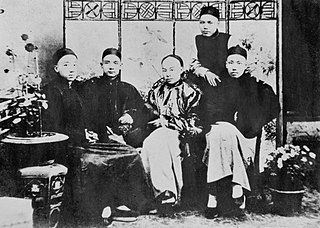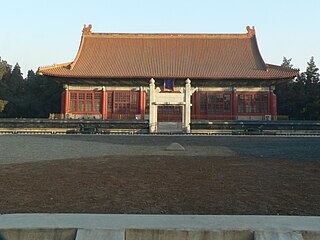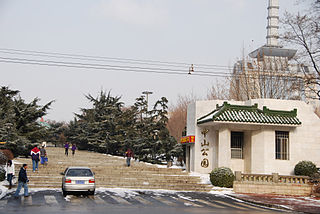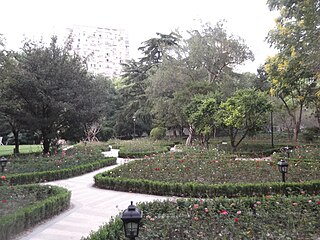 W
WSun Yat-sen was a Chinese statesman, physician, and political philosopher, who served as the provisional first president of the Republic of China and the first leader of the Kuomintang. He is called the "Father of the Nation" in the Republic of China, and the "Forerunner of the Revolution" in the People's Republic of China for his instrumental role in the overthrow of the Qing dynasty during the Xinhai Revolution. Sun is unique among 20th-century Chinese leaders for being widely revered in both mainland China and Taiwan.
 W
WSir James Cantlie was a British physician. He was a pioneer of first aid, which in 1875 was unknown: even the police had no knowledge of basic techniques such as how to stop serious bleeding and applying splints. He was also influential in the study of tropical diseases and in the debates concerning degeneration theory.
 W
WDai Jitao or Tai Chi-t'ao was a Chinese journalist, an early Kuomintang member, and the first head of the Examination Yuan of the Republic of China. He is often referred to as Dai Chuanxian or by his other courtesy name, Dai Xuantang.
 W
WThe Former Residence of Sun Yat-sen, located at 7 Xiangshan Road in the French Concession area of Shanghai, China, near Fuxing Park to the east, was the residence of the Chinese revolutionary Dr. Sun Yat-sen (1866–1925)
 W
WThe Four Bandits, Four Outlaws (四大寇) or the Four Desperados (清末四大寇) was a nickname given to a group of 4 young students in Hong Kong who were keen on discussing the current issues in China, and aspired to overthrow the corrupt Qing dynasty run by the Manchus. The four bandits were Yeung Hok-ling, Sun Yat-sen, Chan Siu-bak and Yau Lit. "Yeung Yiu Kee" (楊耀記), Yeung's family shop located at 24 Gough Street in Hong Kong, used to be the meeting place of the bandits. One of the Four Bandits, Sun Yat-sen later became the leader of China Revolutionary Alliance and the first Provisional President of the Republic of China. At the Dr Sun Yat-sen Museum, statues made out of wax were made of the exact picture taken.
 W
WTōten Miyazaki or Torazō Miyazaki was a Japanese philosopher who aided and supported Sun Yat-sen during the Xinhai Revolution. While Sun was in Japan, he assisted Sun in his travels as he was wanted by Qing dynasty authorities.
 W
WHung Lau is a house built between 1905 and 1910 on former farmland in Pak Kok, Tuen Mun, Hong Kong. It was used by the Revive China Society (興中會) as a base for revolutionary activities against the Qing dynasty.
 W
WSong Jiaoren was a Chinese republican revolutionary, political leader and a founder of the Kuomintang (KMT). Song Jiaoren led the Kuomintang Party to electoral victories in China's first democratic election. He based his appeal on the upper class gentry, landowners, and merchants. Historians have concluded that provisional president, Yuan Shikai, was responsible for his assassination on March 20, 1913.
 W
WThe Sun Yat Sen Nanyang Memorial Hall, also known as Wan Qing Yuan, and formerly as the Sun Yat Sen Villa, is a two-story colonial style villa in Balestier, Singapore. The villa is now a museum commemorating Sun Yat Sen (1866–1925), the founding father of the Republic of China who visited Singapore nine times between 1900 and 1911.
 W
WSun Yat-sen House is located in the South Garden of Gulou Campus of Nanjing University in Nanjing, Jiangsu, China. It's said that Sun Yat-sen, the first president of the Republic of China, lived there in 1910s.
 W
WSun Yat-sen, or Place Sun Yat-sen, is a park in Montreal's Chinatown, in Quebec, Canada. The space, named after Sun Yat-sen, hosts many cultural events and other festivals. It features a bust of Sun Yat-sen.
 W
WSun Yat-sen University, abbreviated SYSU and colloquially known in Chinese as Zhongda, also known as Zhongshan University, is a major Chinese public research university located in Guangzhou, Guangdong, China. It was founded in 1924 by and named after Sun Yat-sen, a revolutionary and the founding father of the Republic of China. The school's main campus, commonly referred to as the South Campus, is located in Haizhu District, Guangzhou, inheriting the campus from the former Lingnan University. The university has five campuses in the three cities of Guangzhou, Zhuhai and Shenzhen, and ten affiliated hospitals. It is a member of Project 985 and Project 211.
 W
WZhongshan Hall is a historical building which originally functioned as the Taipei (Taihoku) City Public Auditorium. It is located at 98 Yanping South Road in the Ximending neighborhood of Zhongzheng District, Taipei, Taiwan. In 1992, it was recognized by the government as a historic site.
 W
WThe Zhongshan Park is a former imperial altar and now a public park that lies just southwest of the Forbidden City in the Imperial City, Beijing.
 W
WDalian Zhongshan Park is a public park in the Shahekou District of Dalian, Liaoning Province, China, named after Sun Zhongshan, the first president of the Republic of China.
 W
WZhongshan Park, formerly called Jessfield Park and Zhaofeng Park, is a park in Shanghai, China. The park has a big collection of trees and flowers. People fly kites and play sport games on the large meadow areas.
 W
WZhongshan Park is a public urban park in Nanshan, Shenzhen, China. Built in 1925 and subsequently named after Sun Yat-Sen, the first president of the Republic of China, it is the oldest surviving park in Shenzhen.
 W
WThe modern Chinese tunic suit is a style of male attire originally known in China as the Zhongshan suit after the republican leader Sun Yat-sen. Sun Yat-sen introduced the style shortly after the founding of the Republic of China (1912–1949) as a form of national dress with distinct political overtones. He based the suit on the Japanese cadet uniform. The four pockets are said to represent the Four Virtues of propriety, justice, honesty, and shame; and the five buttons the branches of China's government.